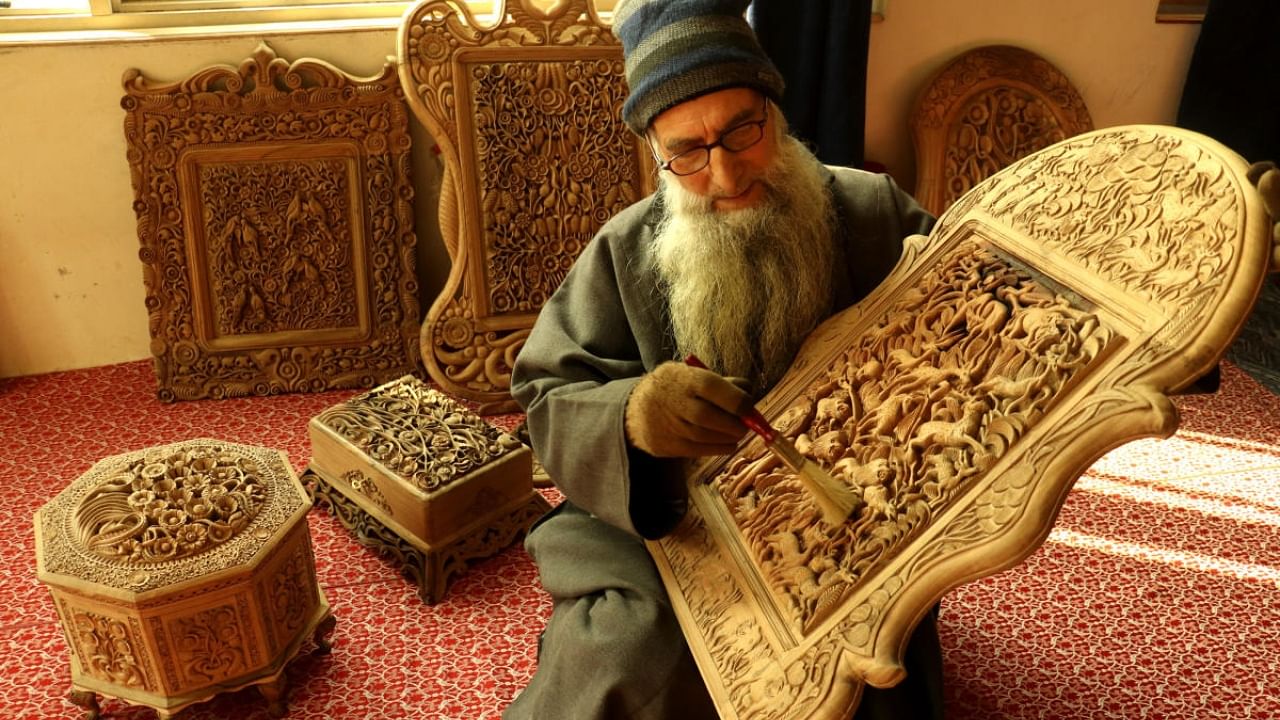
When 28-year-old Ehtisham Qalander from Srinagar finished his B.Tech degree from the Indian Institute of Technology (IIT), Roorkee, five years back, lucrative jobs in the corporate sector were awaiting him.
But he had other ideas. He wanted to do something for the struggling craftsmen, who were working with his father’s enterprise for decades.
The demand for walnut wood carving was at its lowest ebb when Ehtisham took over the challenge to revive the exquisite craft. It is believed the craft was introduced to Kashmiri artisans by Sufi saint Sheikh Hamza Makhdoom during the rule of Zainul Abdideen in the 15th century, largely to boost the valley’s economy.
Five years down the line, over 30 craftsmen have been employed by Qalander's company and their salaries range from Rs 30,000-50,000.
Marketing strategy needed
So what changed between 2017 and 2022? Ehtisham says he started to promote walnut wood carving in shrines and mosques in Srinagar. “We have the artisans, skill and art. What we lack is a proper marketing strategy. While the demand is diversified, over the years, we couldn’t keep up the pace. There is a need to have a proper mechanism if this trade has to survive,” he told DHoS.
Tracing the roots of the walnut wood carving, he said European designers would teach local artisans in the 19th and early 20th centuries. “But in the last 30-40 years, the art started decaying. Unless this art is taken to a new level and marketed properly, it will definitely die. It needs a proper skill set,” Ehtisham added.
The J&K government’s 2021 ‘Karkhandar scheme’ for the revival of dying crafts gave further impetus to walnut wood carving. Under the ‘Karkhandar scheme’, skill upgradation training is provided to such crafts which are facing human resource shortages like walnut wood carving, silver filigree, carpet, Kani shawl weaving, Khatamband and papier machie.
The famous shrines of Kashmir — Nund Rishi, Noor-ud-din-Wali, and the Naqshaband mosque — are just a few instances of the outstanding examples of finely carved buildings, shrines, and mausoleums that still exist in the Valley.
Sturdy and intricate
Walnut wood carving is an ornamental and delicate crafting process that is unique to Kashmir due to the concentration of walnut trees in the valley. Kashmir has remained one of the few places in the world where walnut is still available. Walnut wood is sturdy and intricate work is made easier by the wood's close grain and uniform texture. Additionally, artistic effects are visible easily on its polished surface.
Abdul Ahad Sheikh, who is working tirelessly on walnut wood to carve delicate designs at his workplace in the old city’s Safa Kadal, says he is the last member of his family of woodcarvers alive. “I was offered a government job in 1973 but rejected it as I used to earn in a month what a government employee of that time would have earned in a year. But time changes, now there is hardly any work for me and my son has decided against joining this craft,” he said.
Ehtisham seconded Sheikh’s views. “The younger generation doesn’t want to learn this craft, as it needs a lot of patience and there are lesser returns. Besides, artisans are placed at the bottom of the social hierarchy. These craftsmen live a miserable life and despite being so skilled, there is little recognition for them,” he said.
Before the eruption of insurgency in Kashmir in 1989, there was a huge market for woodcarving. Foreign tourists used to buy in bulk. Ehtisham aims to bring back this sort of glory. “I want not only to give my workers decent salaries, but also respect and dignity. I want to give them a sense of ownership,” he said.
The young entrepreneur says they have dedicated a major portion of their walnut work to recreating contemporary heritage for future generations to follow and adore.